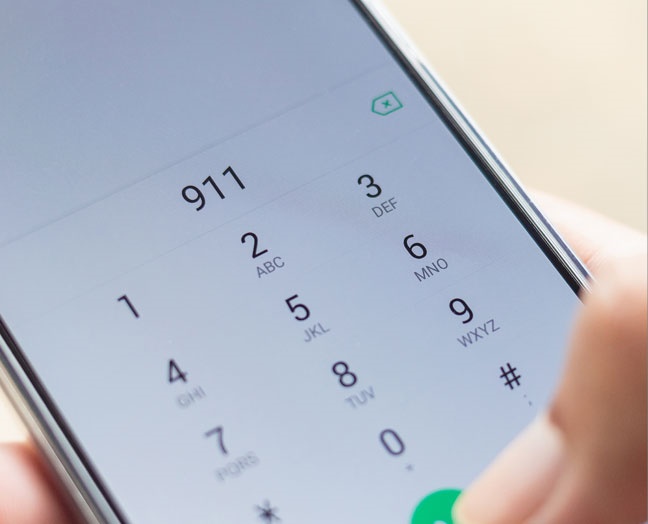Utah Communications Authoriy manages the 911 Program and the Vision for Next Generation 911.
Next Generation 911
Because most 911 systems were originally built using analog rather than digital technologies, public safety answering points (PSAPs) across the country need to be upgraded to a digital or Internet Protocol (IP)-based 911 system, commonly referred to as Next Generation 911 (NG911).
The success and reliability of 911 will be greatly improved with the implementation of NG911, as it will enhance emergency number services to create a faster, more resilient system that allows voice, photos, videos and text messages to flow seamlessly from the public to the 911 network.
NG911 will also improve PSAP ability to help manage call overload, natural disasters, and transferring of 911 calls and proper jurisdictional responses based on location tracking.
While the technology to implement these new IP-based 911 systems is available now, the transition to NG911 will involve much more than just new computer hardware and software. Implementing NG911 in states and counties nationwide will require the coordination of a variety of emergency communication, public safety, legislative and governing entities.
How does the existing 9-1-1 system work?
Voice calls are delivered to PSAPs by a system that uses data tables that relate telephone numbers to addresses. In the case of traditional landline calls, a third party contractor provides the information services that are used to pre-program the telecoms' 9-1-1 'selective routers' that quickly connect the 9-1-1 caller to their designated PSAP. These information services act as an intermediary between customer address information stored by each telecom and the Master Street Address Guide (MSAG), maintained by each PSAP. The MSAG is a table of valid address ranges and PSAP zone assignments. The caller's address location is delivered to the PSAP call taker through a separate service (referred to as Automatic Location Information or ALI) at or very near the time of the call connection. Keep in mind that, although updated to accommodate for wireless calls, the existing 9-1-1 system was originally architected in the mainframe era, well before a lot of what we now take for granted, like caller ID service, was a possible ingredient. (More info)
For landline and most VOIP calls, the telephone number is linked to a street address and that street address is what determines the primary PSAP to which the call is initially delivered. For wireless 9-1-1 calls, the call routing is based on a pre-determined PSAP assignment made for each antenna sector on the communicating tower, and the location of the calling device is subsequently delivered as geographic coordinates, generally within about 300 meters or less (E9-1-1 Phase 2 standards).
What is Next Generation 911 (NG 9-1-1)?
NextGen 9-1-1 is an initiative that seeks to upgrade the infrastructure, processes, and capabilities of the 9-1-1 systems. The primary upgrades include converting to an internet protocol (IP)-based communications backbone (referred to as ESI Net in NG speak), upgrading PSAP center call handling equipment (CPE) and handling additional communication mediums (text messaging, photos, video, etc). (More info)
Also, and of significant interest, the NG9-1-1 conversion will result in a transition from a complex system of telephone number tables, address tables, and PSAP zone assignment tables to an new environment where call connections are guided almost entirely based on digital mapping coordinates and GIS reference data layers. GIS road centerlines (with address ranges for each block) and address point datasets will be used to allow telecoms to pre-validate and store geographic coordinates for customer addresses on their own servers. The GIS data layers will provide improved precision for locating address-based incidents and, together with a web-editable PSAP zone boundary map layer, will allow for dynamic re-routing of calls in cases of PSAP downtime or overload.
In understanding and communicating community locations, humans work best with street addresses. Their computers and mobile devices work best with digital geographic coordinates. NG's GIS-driven approach, has a big advantage over the existing 9-1-1 systems tables because it allows for both human needs and computers' strengths to be realized. It also provides for a robust environment for visually inspecting and updating the important data resources that support the entire emergency response process from call routing to call taking to dispatch to field operations, and as needed, to business analysis.
GIS preparedness
Utah Automated Geographic Reference Center (AGRC) has worked with county and local government, 9-1-1 centers, and the Utah 9-1-1 Committee to build the important NG9-1-1-required GIS data layers into statewide resources. Utah is well-positioned with regard to NG9-1-1 map data resources since the same or similar data is being actively used in support of local and regional fleet dispatching, elections management, business registration, mobile phone sales taxes, crash and citation mapping, and other areas.
Important NG9-1-1 GIS data layers include:
The road centerlines and address range dataset has been a mature information products for many years but it is likely to need to transition to a more frequent update cycle (currently approximately every 2 months but NG will require a 24 hour refresh update cycle for correcting missing or incorrect data).
Utah's first release of a statewide address points GIS layer was in June 2013 and most counties are close to if not complete. An update is expected in early January 2014. While address points are strongly recommended (not required) for the NG9-1-1 environment, a more frequent update cycle is suggested for this dataset too.
Addressing system boundaries (often referred to as 'address grids' in Utah) and their relationship to informal placenames are also important since addresses will need to be found across large regions or statewide using community name or informal placenames to focus the search.
The GIS representation of PSAP jurisdictional boundaries have been maintained by AGRC for the Utah 9-1-1 Committee since 2005 in order to track the enhanced 9-1-1 (e9-1-1) build out initiative and related grant funding. Existing emergency service number zones (ESNs) have, for the most part, not yet been mapped in Utah but can be derived into a GIS format from information in the MSAG tables as needed.
A highway system route and milepost GIS dataset has been maintained in partnership with UDOT since 2009 and includes the ability to look up any milepost-based location reference ("I'm at milepost 210 on I-15") and to display exit number as well as mileposts (for every 1/10th of a mile) on 9-1-1 call-taker and dispatcher screens. This resource is likely not a direct asset to 9-1-1 call routing but may be helpful to call takers as they work to verify incident locations, especially for roadside mobile callers.
For more information visit: https://gis.utah.gov/utah-ng911-gis-roadmap-v1/


